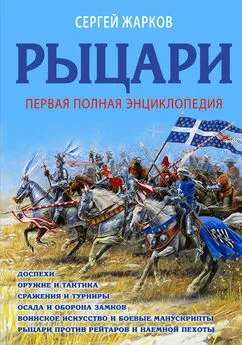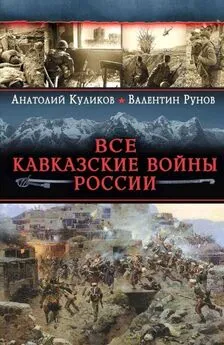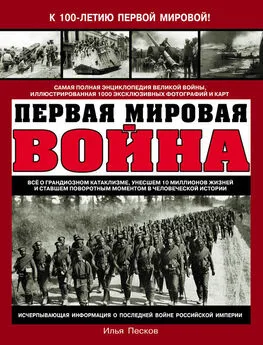Александр Махлаюк - Римские легионы. Самая полная иллюстрированная энциклопедия
- Название:Римские легионы. Самая полная иллюстрированная энциклопедия
- Автор:
- Жанр:
- Издательство:Литагент Яуза
- Год:2018
- Город:М.
- ISBN:978-5-04-089212-9
- Рейтинг:
- Избранное:Добавить в избранное
-
Отзывы:
-
Ваша оценка:
Александр Махлаюк - Римские легионы. Самая полная иллюстрированная энциклопедия краткое содержание
Боевое расписание и тактика, вооружение и боевое применение, редкие поражения и знаковые победы – в этой книге, беспрецедентной по глубине и охвату материала, история римских легионов предстает во всем ее величии. Эта иллюстрированная энциклопедия – лучшее на сегодняшний день исследование военного дела Римской империи на пике ее могущества.
Римские легионы. Самая полная иллюстрированная энциклопедия - читать онлайн бесплатно ознакомительный отрывок
Интервал:
Закладка:
Les légions de Rome sous le haut-empire. Actes du congrès de Lyon (17–19 Septembre 1998)/Ed. Y. Le Bohec, C. Wolff. Vol. I–II. Lyon; Paris, 2000.
Lendon J. E. Soldiers and Ghosts: A History of Battle in Classical Antiquity. New Haven, 2005.
Le Roux P. L’armée romaine et l’organisation des provinces Ibériques d’Auguste а l’invasion de 409. P., 1982.
Lockwood J. A . Six-Legged Soldiers: Using Insects as Weapons of War. Oxford, 2008.
Luttwak E. N. The Grand Strategy of the Roman Empire. 2nd ed. Baltimore; L., 1976.
McDonnell M. Roman Manliness. Virtus and the Roman Republic. Cambridge, 2006.
MacMullen R. How big was the Roman army?//Klio. 1980. Bd. 62. P. 451–460.
MacMullen R. The Roman emperors’ army costs//Latomus. 1984. Vol. 43. P. 571–580.
MacMullen R. The Legion as a Society//Historia. 1984. Bd. 33. Hft. 4. P. 440–456.
Mann J. C . The Raising of New Legions during the Principate//Hermes. 1963. Bd. 91. P. 483–489.
Mann J. C. Legionary Recruitment and Veteran Settlement during the Principate. L., 1983.
Marsden E. W. Greek and Roman Artillery: Historical Development and Technical Treatises. Oxford, 1969–1971.
Mattern S. P. Rome and the Enemy: Imperial Strategy in the Principate. Berkeley; Los Angeles; L., 1999.
Maxfield V. A. The Military Decorations of the Roman Army. L., 1981.
Melchior A . Caesar in Vietnam: Did Roman Soldiers Suffer from Post-Traumatic Stress Disorder?//Greece and Rome. 2011. Vol. 58. No. 2. P. 209–223.
Le métier de soldat dans le monde romain. Actes du cinquième Congrès de Lyon (23–25 septembre 2010)/Ed. C. Wolff. Lyon, 2012.
Moore R. L. The Art of Command: The Roman Army General and His Troops, 135 BC–138 AD. PhD Diss. Michigan, 2002.
Nelis-Clément J. Les beneficiarii : militaires et administrateurs au service de l’Empire (Ier s. a. C. – VIe s. p. C.). Bordeaux, 2000.
Neumann A . Römische Rekrutenausbildung im Lichte der Disziplin//Classical Philology. 1948. Vol. 43. P. 157–173.
New Perspectives on Ancient Warfare/Ed. G. G. Fagan, M. Trundle. Leiden; Boston, 2010.
Nock A. D. The Roman Army and the Roman Religious Year A. D. Nock//Harvard Theological Review. 1952. Vol. 45. P. 186–252.
Oakley S. P. Single combat in the Roman Republic//Classical Quarterly. 1985. Vol. 35. No. 2. P. 392–410.
Palao Vicente J. J . Virtus Centurionis. La figura del centuriуn en César//Geriуn. 2009. Vol. 27, núm. 1. P. 191–206.
Parker H. M. D. The Roman Legions. 2nd ed. N. Y., 1958.
Peddie J. The Roman War Machine. Stroud, 1994.
Peretz D. Military Burial and the Identification of the Roman Fallen Soldiers//Klio. 2005. Bd. 87. Hft. 1. P. 123–138.
Petrikovits H., von. Die Innenbauten römischer Legionslager während der Prinzipatszeit. Opladen, 1975.
Pferdehirt B. Die Rolle des Militärs für den sozialen Aufstieg in der römischen Kaiserzeit. Mainz, 2002.
Phang S. E. The Marriage of Roman Soldier, 13 BC – AD 235: Law and Family in the Imperial Army. Leiden; Boston; Köln, 2001.
Phang S. E. The Famalies of Roman Soldiers (First and Second Centuries A. D.): Culture, Law, and Practice//Journal of Family History. 2002. Vol. 27. No. 4. P. 352–373.
Phang S. E. Roman Military Service. Ideologies of Discipline in the Late Republic and Early Principate. Cambridge; N. Y., 2008.
Pitts L. F., Joseph J. K. St. Inchtuthil: The Roman Legionary Fortress. L., 1985.
The Production and Distribution of Roman Military Equipment/Ed. M. C. Bishop. Oxford, 1985.
Raaflaub K. A. Die Militärreformen des Augustus und politische Problematik des frühen Prinzipats//Saeculum Augustum. I. Herrschaft und Gesellschaft/Hg. von G. Binder. Darmstadt, 1987. S. 246–307.
Rankov N. B. The Praetorian Guard. L., 1994.
Reddé M. Mare Nostrum. Les infrastructures, le dispositif et l’histoire de la marine militaire sous l’empire romain. Rome, 1986.
Renel Ch . Cultes militaires de Rome. Les enseignes. Lyon; P., 1903.
Representations of War in Ancient Rome/Ed. Sh. Dillon, K. E. Welch. Cambridge, 2006.
Rich J. W . Roman Rituals of War//The Oxford Handbook of Warfare in the Classical World/Ed. Campbell & L. A. Tritle. Oxford, 2013. P. 542–568.
Rihll T. The Catapult. A History. Yardley, 2007.
Ritterling E. Legio (Prinzipatszeit)//Pauly’s Real-Encyclopädie der classischen Altertumswissenschaft. Neue Bearbeitung/Hrsg. von G. Wissowa. Stuttgart, 1925. Bd. XII. 1–XII. 2. Sp. 1211–1829.
Robinson H. R. The Armour of Imperial Rome. L., 1975.
The Roman Army and the Economy/Ed. by P. Erdkamp. Amsterdam, 2002.
The Roman Army as a Community/Ed. by A. Goldsworthy and I. Haynes. Portsmouth, 1999.
The Roman Army in the East/Ed. D. L. Kennedy. Ann Arbor, 1996.
Roman Fortresses and their Legions/Ed. R. J. Brewer. L., 2000.
Roman Military Equipment: The Accoutrements of War/Ed. M. Dawson. Oxford, 1987.
Die römische Armee im Experiment/Hg. Christian Koepfer, Florian Himmler and Josef Löffl. Berlin, 2011.
Rosenstein N. Imperatores victi: Military Defeat and Aristocratic Competition in the middle and late Republic. Berkeley, 1990.
Rosenstein N. Rome at War: Farms, Families, and Death in the Middle Republic. Chapel Hill, 2004.
Ross S . How They Lived. A Roman Centurion. Vero Beach, 1985.
Rossi L. Hasta pura. L’objet et la cérémonie du donum militiae dans l’iconographie célébrative de la colonne Trajane//Revue archéologique. 1985. No. 2. P. 231–236.
Roth J. The size and organization of the Roman imperial legion//Historia. 1994. Bd. 43. Hft. 3. P. 346–362.
Roth J. The Logistics of the Roman Army at War (264 B. C. – A. D. 235). Leiden, 1998.
Saddington D. B. The Development of the Roman Auxiliary Forces from Caesar to Vespasian. Harare, 1982.
Sánchez-Ostiz C. Castillo y A . Legiones y legionarios en los epigrafes pro salute imperatoris: una panorámica//Les légions de Rome sous le haut-empire. Actes du congrès de Lyon (17–19 Septembre 1998)/Ed. Y. Le Bohec, C. Wolff. Vol. II. Lyon; Paris, 2000. P. 733–742.
Santosuosso A. Soldiers, Citizens, and the Symbols of War. From Classical Greece to Republican Rome, 500–167 B. C. Boulder – Oxford, 1997.
Santosuosso A. Storming the Heavens: Soldiers, Emperors, and Civilians in the Roman Empire. Boulder; Oxford, 2001.
Sarnowski T . Nova Ordinatio in römischen Heer des 3. Jh. und neue Primus Pilus-Weihung aus Novae in Niedermoesien//ZPE. 1993. Bd. 95. S. 197–203.
Scheidel W. Inschriftenstatistik und die Frage des Rekrutierungsalters römischer Soldaten//Chiron. 1992. Bd. 22. S. 281–297.
Scheidel W. Rekruten und Überlebende: Die demographische Struktur der römischen Legionen in der Prinzipatszeit//Klio. 1995. Bd. 77. S. 232–254.
Scheidel W. The Demography of the Roman Army//Measuring Sex, Age and Death in the Roman Empire. Ann Arbor, Michigan, 1996. P. 93–138.
Schmitthenner W. Politik und Armee in der späten römischen Republik//Historische Zeitschrift. 1960. Bd. 190. S. 1–17.
Schramm E. Die antiken Geschütze der Saalburg. Bemerkungen zu ihrer Rekonstruktion. B., 1918.
Sherk R. Roman Geographical Exploration and Military Maps//Aufstieg und Niedergang der römischen Welt: Geschichte und Kultur Roms im Spiegel der neueren Forschung/Hrsg. von W. Haase, H. Temporini. Bd II. 1. B.; N. Y., 1974. P. 534–562.
Smith R. E. Service in the post-Marian Roman army. Manchester, 1958.
Sommner M. Der Kaiser spricht. Die adlocutio als Motiv der Kommunication zwischen Herrscher und Heer von Caligula bis Konstantin//Krieg – Gesellschaft – Institutionen. Beiträge zu einer vergleichenden Kriegsgeschichte/Hg. B. Meeßner, O. Schmitt und M. Sommer. B., 2005. S. 335–354.
Sorrosal C. S . El ceremonial military romano: liturgias, rituals y protocolos en los actos solemnes relativos a la vida y la muerte en el ejército romano del alto imperio: Tesis doctoral. Bellaterra, 2013.
Southern P. The Roman Army: A Social and Institutional History. Oxford, 2007.
Speidel M. A. Roman army pay scales//Journal of Roman Studies. 1992. Vol. 82. P. 87–105.
Speidel M. A. Specialisation and Promotion in the Roman Imperial Army//Administration, Prosopography and Appointment Policies in the Roman Empire. Proceedings of the First Workshop of the International Network Impact of Empire/Ed. Lucas de Blois. Amsterdam, 2001. Р. 50–61.
Speidel M. A. Augustus’ militärische Neuordnung und ihr Beitrag zum Erfolg des Imperium Romanum// Speidel M. A. Heer und Herrschaft im Römischen Reich der Hohen Kaiserzeit. Stuttgart, 2009. S. 19–51.
Speidel M. A. Dressed for the occasion. Clothes and context in the Roman army// Speidel M. A. Heer und Herrschaft im Römischen Reich der Hohen Kaiserzeit. Stuttgart, 2009. P. 235–248.
Speidel M. A . Pro patria mori… La doctrine du patriotism romaine dans l’armée impériale//Cahiers Glotz. 2010. Vol. XXI. P. 139–154.
Speidel M. P. The Religion of Jupiter Dolichenus in the Roman Army. Leiden, 1978.
Speidel M. P. Exploratores. Mobile élite units of Roman Germany//Epigraphische Studien 13. Sammelband. Köln; Bonn, 1983. P. 63–78.
Speidel M. P. Roman Army Studies. Vol. I. Amsterdam, 1984.
Speidel M. P. Roman Army Studies. Vol. II. Stuttgart, 1992.
Speidel M. P. Riding for Caesar: The Roman Emperors’ Horse Guards. Cambridge, Mass., 1994.
Stäcker J. Princeps und miles . Studien zum Bindungs— und Nachverhältnis von Kaiser und Soldat im 1. und 2. Jahrhudert n. Chr. Hildesheim; Zürich; N. Y., 2003.
Starr C. G. The Roman Imperial Navy, 31 BC – AD 324. 2nd ed. Cambridge, 1960.
Stoll O. «Offizier und Gentleman». Der römische Offizier als Kultfunktionär//Klio. 1998. Bd. 80. S. 134–162.
Stoll O. Römisches Heer und Gesellschaft. Gesammelte Beiträge 1991–1999. Stuttgart, 2001.
Summerly J. R . Studies in the legionary centurionate. Durham University, 1992.
Taylor D . Roman Empire at War. A Compendium of Battles from 31 BC to AD 565. Barnsley, 2016.
Thomas C . Claudius and the Roman Army Reforms//Historia. 2004. Bd. 53, Hft. 4. P. 424–452.
Töpfer K. Signa Militaria. Die römischen Feldzeichen in der Republik und im Prinzipat. Mainz, 2011.
Ureche P . The Soldiers’ Morale in the Roman Army//Journal of Ancient History and Archaeology. 2014. No. 1.3. P. 3–7.
Ureche P . Some tactical elements for archers in the Roman army//Journal of Ancient History and Archaeology. 2015. No. 2.4. P. 10–14.
Vendrand-Voyer J . Normes civiques et métier militaire а Rome sous le Principat. Clermont, 1983.
War and society in the Roman world/Ed. by J. Rich, G. Shipley. L.; N. Y., 1993.
Ward C. A . Centurions: the practice of Roman officership: PhD Dissertation. Chapel Hill, 2012.
Watson G. R. The Roman Soldier. N. Y.; Ithaka, 1969 (2nd ed. 1983).
Webster G. The Roman imperial army. L., 1969 (3rd ed. 1985).
Читать дальшеИнтервал:
Закладка:
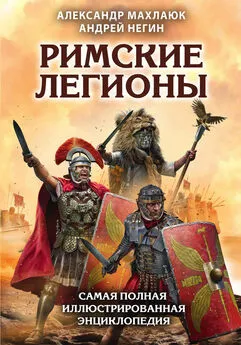
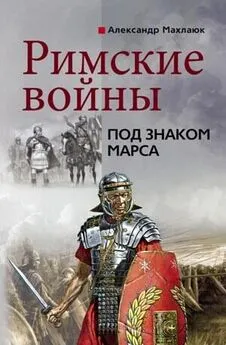
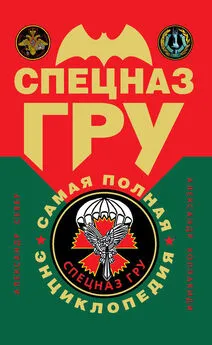
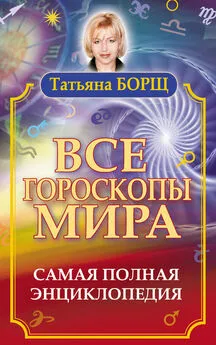
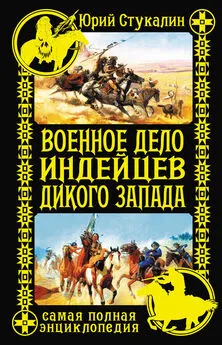
![Михаил Барятинский - Танки III Рейха. Том III [Самая полная энциклопедия]](/books/1094087/mihail-baryatinskij-tanki-iii-rejha-tom-iii-samaya.webp)
![Михаил Барятинский - Танки III Рейха. Том I [Самая полная энциклопедия]](/books/1094089/mihail-baryatinskij-tanki-iii-rejha-tom-i-samaya-p.webp)
